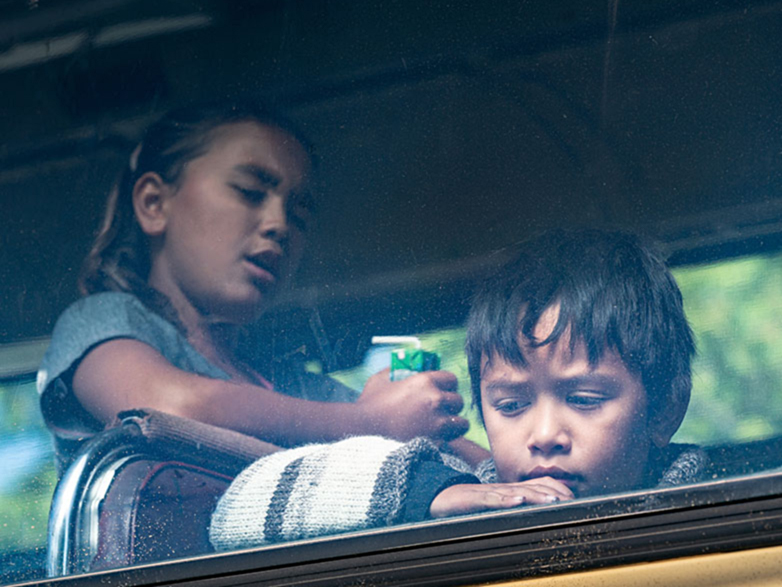
- Golden Globe Awards
Muru (New Zealand)
Muru reminds us about the wealth that films from even the most remote corners of the planet have to offer. How else would we be able to gain insights, however fleeting, into worlds most of us don’t even know exist?
In this particular Non-English Language film we meet the Ngāi Tūhoe community of Rūātoki, the home of indigenous people in New Zealand. Their identity threatened by the “white people” from the mainland, they converse in their own language, te reo Maori, and they try within their limited means to preserve their own valued way of life.
Part of that effort is attending boot camps where, under the leadership of the respected elder, Tame Iti (played by himself), they focus on survival skills and their traditional rituals. But for New Zealand’s police force their activities seem suspicious. When their surveillance records show a video of their leader mentioning the killing of the Prime Minister, a Special Tactics Group (STG) declares them terrorists and assembles a military-style force.
On the dividing line of the conflict is Community Sergeant “Taffy” Tawharau (Cliff Curtis), who is both a Maori and a police officer. He has recently returned home to the community of Rūātoki to be close to his infirm father. In addition to his duties as a man of the law, Taffy drives the local school bus.
Having grown up among his people, he knows that part of their ancient traditions is Muru, a concept of compensation for wrongdoing. Only an act of restorative justice can achieve balance in relationships and society. His folks cannot forget the wrongdoing by the New Zealand Government: in 1916, the people of Tuhoe were raided and their non-violent prophet Rua Kenana was arrested.
But at the same time, Taffy knows that the STG is paranoid and ruthless. “It only takes a spark and the whole situation explodes,” he warns.
Which is exactly what happens. Rusty (Poroaki Merritt-McDonald), a 15-year-old Maori boy, had fired a shot. Nobody was hurt but he was arrested. Once released, he gets drunk and smashes the window of a bakery. Taffy orders him to clean up the mess the next day. The boy carries the broom to do so on his back. The over-eager STG officers, observing him from afar, identify the broom as a weapon, and the hunt, culminating in a deadly disaster, begins.
The film is based on actual historical events of 2007. But a statement at the beginning of the film adds the disclaimer: “In 2007, the New Zealand Government raided the people of Tuhoe and the activist Tame Iti. This film is not a recreation of the police raids against the people of Tuhoe. It is a response.”